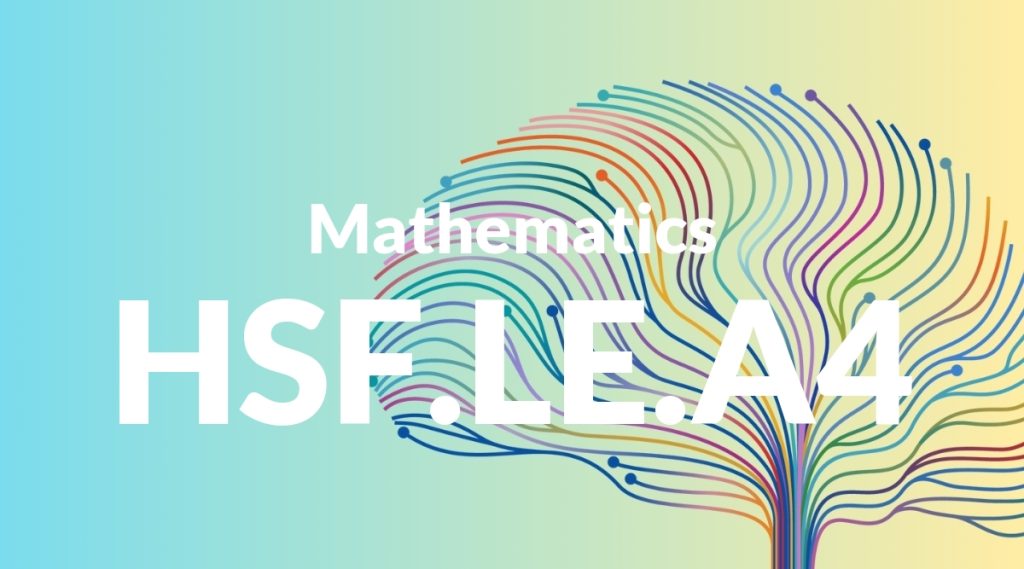Standard: HSF.LE.A4 – For exponential models, express as a logarithm the solution to ab^ct = d where a, c, and d are numbers and the base b is 2, 10, or e; evaluate the logarithm using technology.
Grade level: High School: Functions
Subject: Mathematics
Domain: Linear, Quadratic, & Exponential Models
Teacher Overview
This standard focuses on expressing exponential models as logarithms and evaluating these logarithms using technology. It is crucial for understanding how exponential growth and decay can be analyzed mathematically and applied in real-world scenarios. Students should be comfortable with exponential functions and basic algebraic manipulations. They should also have an introductory understanding of logarithms and their properties.
Mastering this standard will enable students to tackle more complex logarithmic and exponential equations and apply these concepts in various scientific and financial contexts.
Common Misconception 1
A common misconception is that logarithms can only be evaluated with base 10. This is incorrect because logarithms can have different bases, such as 2 and e, which are commonly used in various applications.
Intervention 1
To address this, provide students with examples and exercises that use different bases, and demonstrate how to evaluate these logarithms using technology like graphing calculators or software.
Common Misconception 2
Another misconception is confusing the properties of logarithms with those of exponents. Students might think that the rules for manipulating exponents directly apply to logarithms.
Intervention 2
Clarify this misconception by using visual aids and step-by-step examples to differentiate the properties. Provide practice problems that specifically address these differences.
Prerequisite Knowledge
Students should have a foundational understanding of exponential functions, basic algebraic manipulation, and familiarity with logarithms and their properties.
Subsequent Knowledge
After mastering this standard, students will be able to solve more complex logarithmic and exponential equations, apply logarithms in various scientific and financial contexts, and understand the relationship between exponential and logarithmic functions.
Instructional Activities
- Use graphing calculators to evaluate logarithms with different bases.
- Create real-world problems involving exponential growth and decay for students to solve using logarithms.
- Conduct a class discussion on the applications of logarithms in different fields such as biology, finance, and physics.
- Assign group projects where students model a real-world scenario using exponential functions and solve using logarithms.




